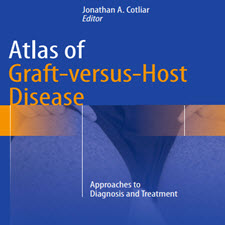Protein Deimination in Human Health and Disease
ABSTRACT
Autoimmune diseases represent a long-standing puzzle. In an incompletely understood series of steps, the immune system loses immune tolerance to self and acquires the ability to recognize and respond to defined and characteristic autoantigens . The involvement of an infectious agent has been suspected to trigger this transition, but a specific etiologic stimulus has not been identified. Recent years have seen an evolution in the understanding of events that lead to autoimmunity . A central role has been assigned to posttranslational modifications of autoantigens during the initial, preclinical phase of autoimmune syndromes. In response to various infections or even under sterile inflammatory conditions, the innate immune system activates a characteristic set of enzymatic reactions, including the regulated conversion of certain arginine residues to citrulline residues. The conversion, carried out by the peptidylarginine deiminases (PADs), results in the conversion of arginine residues to citrulline residues in many notable autoantigens . In turn, an important category of autoantibodies, referred to as anti-citrullinated protein antibodies (ACPA) , specifically recognizes the citrullinated form of these autoantigens. Thus, the concept is gaining acceptance that diverse infections (or sterile inflammation ) result in the citrullination of selfproteins, which—given genetic predisposition or a conducive infectious microenvironment—break tolerance and trigger a self-perpetuating autoimmune process. This chapter highlights aspects of PAD regulation and the development of ACPA in order to propose a unifying principle for the induction of autoimmune disorders.
INTRODUCTION
Autoimmunity was anticipated as a possible outcome that could arise from the adaptive nature of the immune system (Ehrlich P 1800s). Because the immune system is capable of recognizing almost any foreign molecule, it appeared obvious to Paul Ehrlich that autoreactivity, or “horror autotoxicus,” would also predictably appear. Indeed, several dozen human autoimmune disorders are currently recognized as distinct clinical entities, and new disorders continue to be assigned to the category of maladies that arise due to a malfunction of the immune system. Many of these disorders are quite common, such that, for example, rheumatoid arthritis (RA) affects nearly 1 in 100 persons. In aggregate , several percent of the human population develop a serious health condition because of the inappropriate anti-self-reactivity of the immune system.
چکیده
بیماری های خود ایمنی نشان دهنده یک پازل بلند است. در یک سری از مراحل ناقص درک شده، سیستم ایمنی بدن، تحمل ایمنی خود را از دست می دهد و توانایی تشخیص و پاسخ به آنتی ژن های تعریف شده و مشخص را به دست می دهد. دخالت یک عامل عفونی مشکوک به ایجاد این انتقال بوده است، اما یک محرک علت خاصی مشخص نشده است. سال های اخیر شاهد تکامل در درک وقایع است که به autoimmunity منجر می شود. یک نقش مرکزی برای اصلاحات پس از ترانزیتی autoantigens ها در فاز اولیه قبل از خونریزی سندرم های autoimmune قرار گرفته است. در پاسخ به عفونت های مختلف و یا حتی تحت شرایط التهابی استریل، سیستم ایمنی ذاتی فعال یک مجموعه مشخص از واکنش های آنزیمی، از جمله تبدیل تنظیم شده از برخی از آرژینین های باقی مانده به مخلوط citrulline. تبدیل، انجام شده توسط peptidylarginine deiminases (PADs)، تبدیل تبدیل باقی مانده های آرژینین به بقایای citrulline در بسیاری از autoantigens قابل توجه است. به نوبه خود، یک دسته مهم از آنتی بادی های خودکار، که به عنوان آنتی بادی های ضد سرطانی پروتئین (ACPA) نامیده می شوند، به طور خاص شکل سیترالین این عفونت های خودکار را تشخیص می دهند. بنابراين، مفهوم دريافت پذيرش اين است که عفونتهاي گوناگون (يا التهاب استريلي) سبب سيترولينگ شدن خودپروتئينها ميشود که با توجه به استعداد ژنتيکي يا تحريک کافي از بروز عفونتهاي ويروسي عفوني و ايجاد فرآيند اتوايميون خودمراقبتی به وجود میآورد. این فصل جنبه های تنظیم PAD و توسعه ACPA را به منظور ارائه یک اصل متحد برای القاء اختلالات خودایمنی ارائه می دهد.
مقدمه
Autoimmunity به عنوان یک نتیجه ممکن است که می تواند از طبیعت تطبیقی سیستم ایمنی بدن (Ehrlich P 1800s) پیش بینی شود. از آنجا که سیستم ایمنی بدن قادر به تشخیص تقریبا هر مولکول خارجی است، به نظر پل Ehrlich آشکار می شود که خود رعایت یا “وحشت اتتووکسیکس” نیز قابل پیش بینی است. در واقع، چندین ده دستگاه اختلالات خود ایمنی بدن در حال حاضر به عنوان موجودیت های متمایز بالینی شناخته شده است و اختلالات جدید همچنان به دسته های بیماری های ناشی از سوء عملکرد سیستم ایمنی ناشی می شود. بسیاری از این اختلالات بسیار رایج هستند، به عنوان مثال، آرتریت روماتوئید (RA) تقریبا 1 در 100 نفر را تحت تاثیر قرار می دهد. در مجموع، چند درصد از جمعیت انسانی یک وضعیت سلامتی جدی را ایجاد می کند که از خودباوری نامطلوب سیستم ایمنی بدن ناشی می شود.
Year: 2016
Publisher: SPRINGER
By : Anthony P. Nicholas, Sanjoy K. Bhattacharya and Paul R. Thompson
File Information: English Language/ 632 Page / size: 9.04 MB
سال : 1395
ناشر : SPRINGER
کاری از : آنتونی نیکلاس، سانجی ک. باتاتچاریا و پل رام تامپسون
اطلاعات فایل : زبان انگلیسی / 632 صفحه / حجم : MB 9.04


![Protein.Deimination.in.Human.Health.and.Disease.Second.Edition.[taliem.ir]](https://taliem.ir/wp-content/uploads/Protein.Deimination.in_.Human_.Health.and_.Disease.Second.Edition.taliem.ir_.jpg)
![Alzheimer’s disease synaptic dysfunction and Aβ[taliem.ir] Alzheimer's disease synaptic dysfunction and Aβ[taliem.ir]](https://taliem.ir/wp-content/uploads/Alzheimers-disease-synaptic-dysfunction-and-Aβtaliem.ir_.jpg)
![Vascular.Disease.in.Older.Adults.A.Comprehensive.[taliem.ir] Vascular.Disease.in.Older.Adults.A.Comprehensive.[taliem.ir]](https://taliem.ir/wp-content/uploads/Vascular.Disease.in_.Older_.Adults.A.Comprehensive.taliem.ir_.jpg)
![Vascular.Smooth.Muscle.(Structure.and.Function.[taliem.ir] Vascular.Smooth.Muscle.(Structure.and.Function.[taliem.ir]](https://taliem.ir/wp-content/uploads/Vascular.Smooth.Muscle.Structure.and_.Function.taliem.ir_.jpg)
![Human.Retrotransposons.in.Health.and.Disease.[taliem.ir] Human.Retrotransposons.in.Health.and.Disease.[taliem.ir]](https://taliem.ir/wp-content/uploads/Human.Retrotransposons.in_.Health.and_.Disease.taliem.ir_.jpg)
![Eye.in.Pediatric.Systemic.Disease.[taliem.ir] Eye.in.Pediatric.Systemic.Disease.[taliem.ir]](https://taliem.ir/wp-content/uploads/Eye.in_.Pediatric.Systemic.Disease.taliem.ir_.jpg)
![Neuroepigenomics.in.Aging.and.Disease.[taliem.ir] Neuroepigenomics.in.Aging.and.Disease.[taliem.ir]](https://taliem.ir/wp-content/uploads/Neuroepigenomics.in_.Aging_.and_.Disease.taliem.ir_.jpg)
![Treatment of Inammatory Bowel Disease with Biologics[taliem.ir] Treatment of Inammatory Bowel Disease with Biologics[taliem.ir]](https://taliem.ir/wp-content/uploads/Treatment-of-Inammatory-Bowel-Disease-with-Biologicstaliem.ir_.jpg)


![Testosterone.From.Basic.to.Clinical.Aspects.[taliem.ir]](https://taliem.ir/wp-content/uploads/Testosterone.From_.Basic_.to_.Clinical.Aspects.taliem.ir_-150x150.jpg)
![Sepsis.Definitions.Pathophysiology.[taliem.ir]](https://taliem.ir/wp-content/uploads/Sepsis.Definitions.Pathophysiology.taliem.ir_-150x150.jpg)
دیدگاه خود را ثبت کنید
تمایل دارید در گفتگو شرکت کنید؟نظری بدهید!